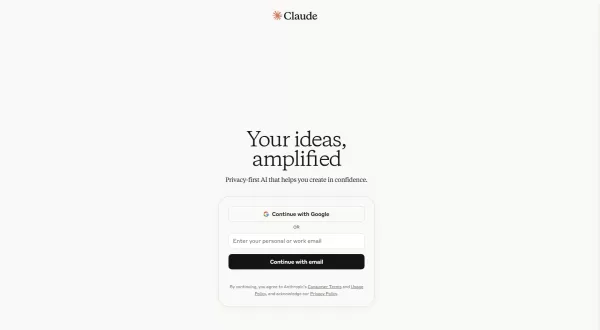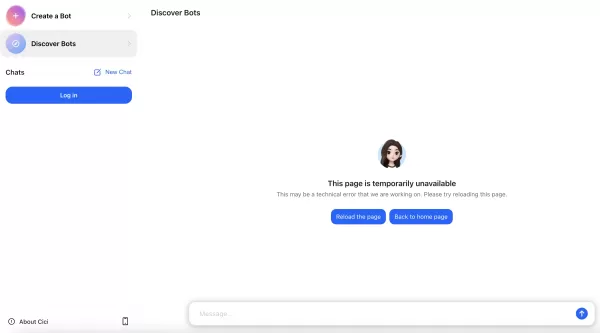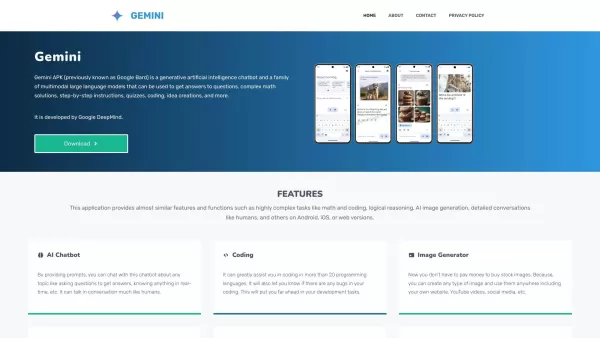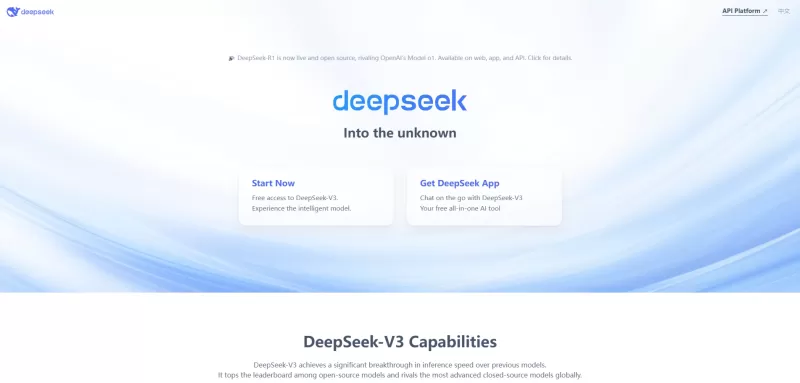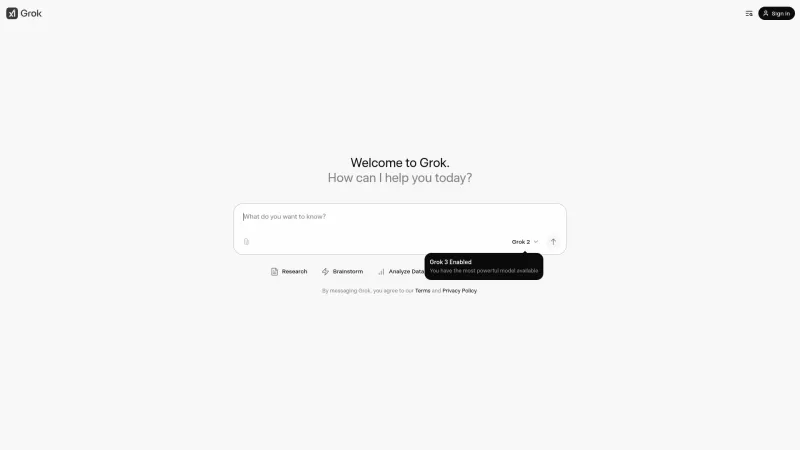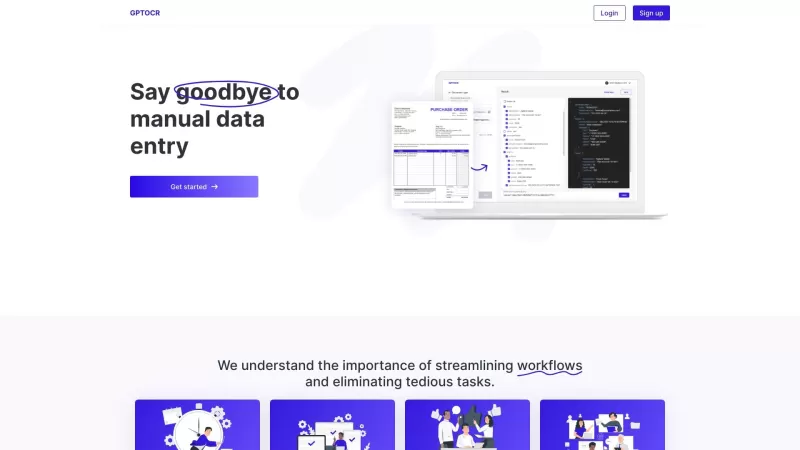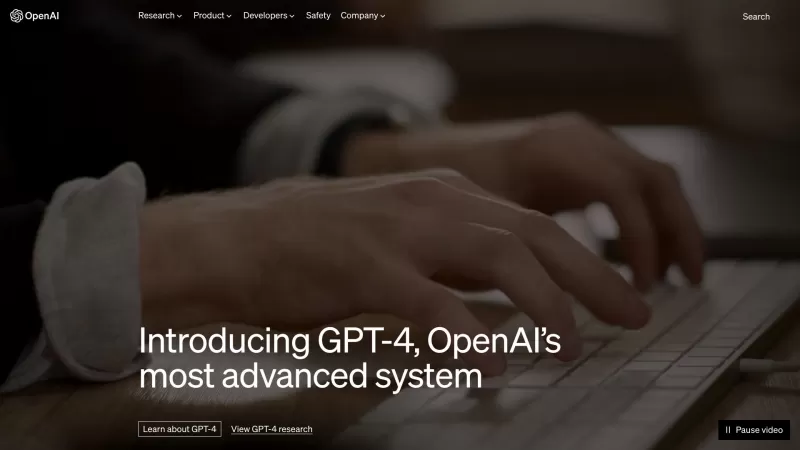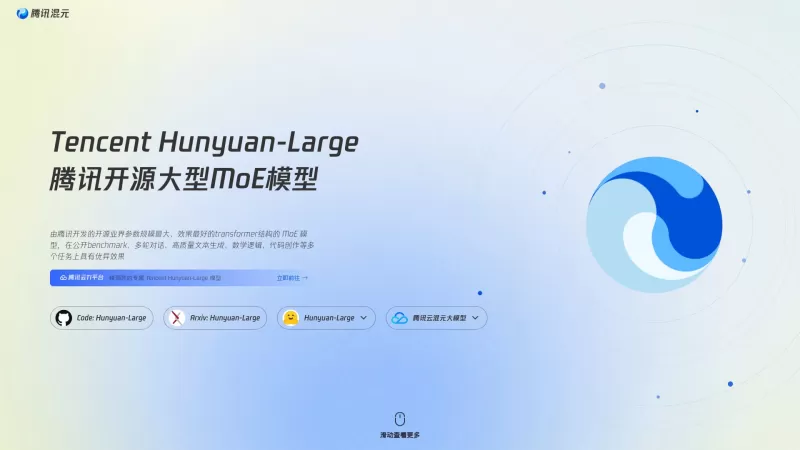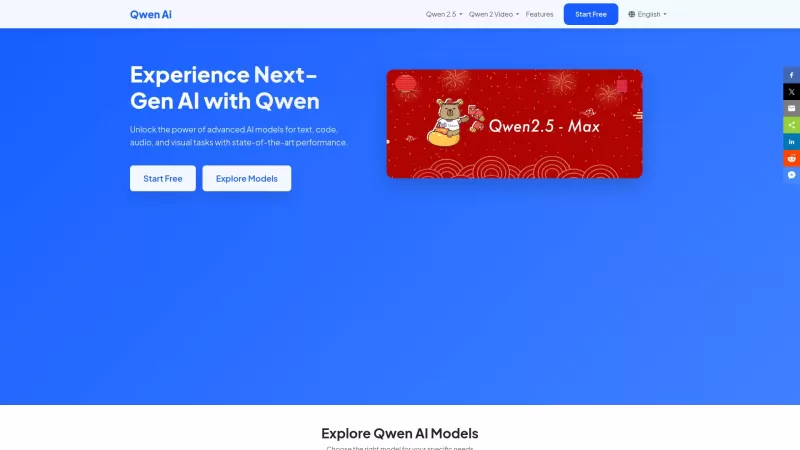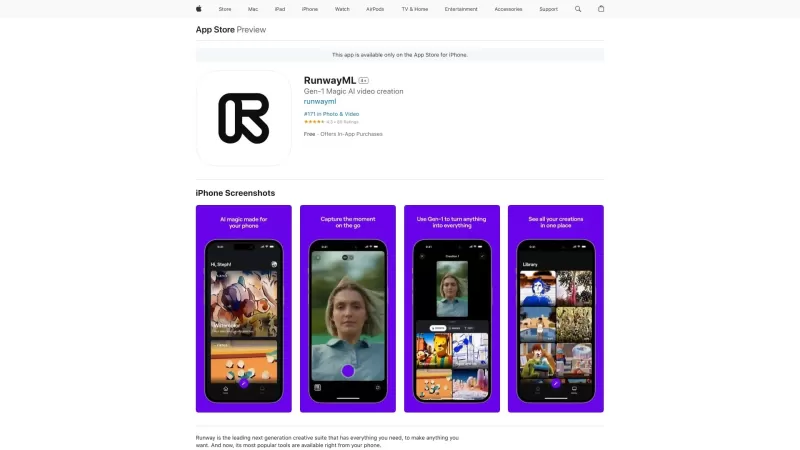Ultimate Guide to AI-Powered YouTube Video Summarizers
In our information-rich digital landscape, AI-powered YouTube video summarizers have become indispensable for efficient content consumption. This in-depth guide explores how to build a sophisticated summarization tool using cutting-edge NLP technology, specifically the BART model from Hugging Face combined with YouTube's Transcript API. Whether you're developing productivity tools, enhancing accessibility solutions, or creating educational resources, this walkthrough provides everything you need to implement professional-grade summarization with both text and audio output capabilities.
Key Features
AI-powered YouTube Summarization: Convert long video content into concise, digestible formats
Transcript Extraction: Leverage the YouTube API to accurately capture video content
Advanced NLP Processing: Utilize Hugging Face's BART model for coherent summarization
Multi-Format Output: Support both text and audio summary versions
Customizable Parameters: Fine-tune summary length and detail level
Accessibility Focus: Make video content more accessible through alternative formats
Scalable Architecture: Build solutions that handle varying video lengths and complexity
Cost Optimization: Implement efficient resource usage strategies
Developing an AI-Powered YouTube Summarizer
Understanding Video Summarization Technology
Modern video summarization solutions combine several sophisticated technologies to transform lengthy content into condensed yet meaningful overviews. These systems perform deep semantic analysis of transcript content, identifying key themes, concepts, and information hierarchies.
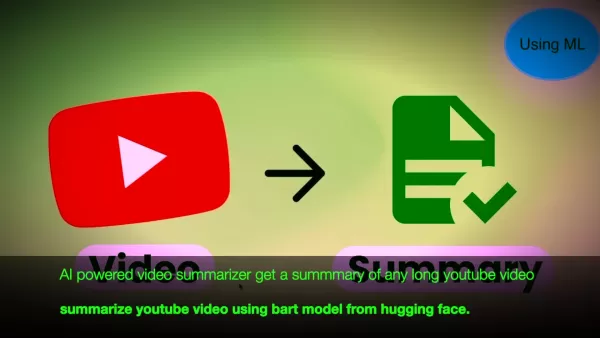
State-of-the-art summarizers employ transformer-based architectures that understand contextual relationships between ideas, ensuring summaries maintain logical flow and preserve essential meaning. Recent advancements now allow these systems to handle nuanced content including technical discussions, educational lectures, and multi-speaker dialogues with impressive fidelity.
The summarization pipeline consists of four critical phases:
- Content Extraction: Retrieving accurate text representation of audio content
- Preprocessing: Normalizing text and preparing it for analysis
- Semantic Analysis: Identifying and ranking key information components
- Output Generation: Producing optimized summaries in desired formats
Implementing Transcript Extraction
High-quality summarization begins with accurate transcript capture. The YouTube Transcript API provides programmatic access to both human-generated and automatic captions, serving as the foundation for subsequent processing steps.
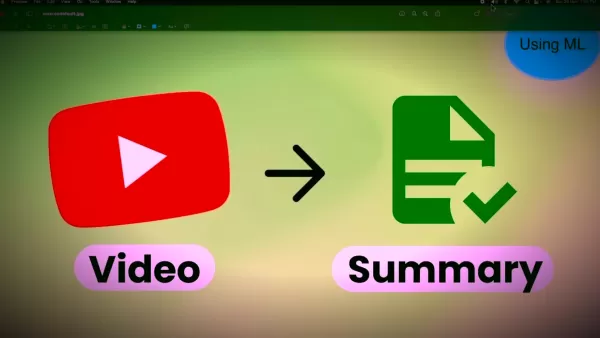
When implementing transcript extraction:
- Install required dependencies with
pip install youtube-transcript-api - Import extraction functionality:
from youtube_transcript_api import YouTubeTranscriptApi - Parse video URLs to extract unique identifiers
- Implement robust error handling for missing transcripts
- Process raw transcripts into unified text format
Advanced implementations can add:
- Transcript caching to reduce API calls
- Quality scoring for auto-generated captions
- Automatic language detection
- Multi-language support
Optimizing the Summarization Process
The BART (Bidirectional and Auto-Regressive Transformers) model represents a significant advancement in abstractive summarization technology. Its sequence-to-sequence architecture excels at generating coherent summaries that capture key information while maintaining contextual relevance.
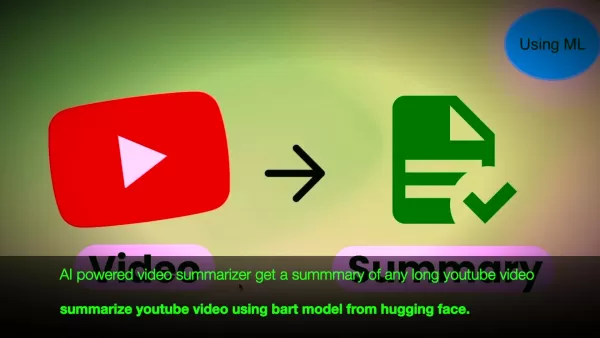
Key implementation considerations:
1. Model Initialization:
from transformers import BartTokenizer, BartForConditionalGeneration
model = BartForConditionalGeneration.from_pretrained('facebook/bart-large-cnn')
tokenizer = BartTokenizer.from_pretrained('facebook/bart-large-cnn')
Input Processing:
inputs = tokenizer([transcript_text], max_length=1024,
truncation=True, return_tensors='pt')
Summary Generation:
summary_ids = model.generate(inputs['input_ids'],
num_beams=4,
max_length=200,
early_stopping=True)
summary = tokenizer.decode(summary_ids[0], skip_special_tokens=True)
For production deployments:
- Implement chunking for long transcripts
- Add confidence scoring for generated summaries
- Include named entity preservation
- Enable topic-focused summarization
Audio Summary Generation
Text-to-Speech Implementation
Audio summaries significantly enhance accessibility and multitasking capabilities. Modern TTS solutions offer near-human quality voice synthesis with customizable parameters.
Implementation options include:
- gTTS: Cloud-based with multilingual support
- pyttsx3: Offline solution with system voices
- Azure Cognitive Services: Enterprise-grade quality
Advanced features to consider:
- Voice style modulation
- Pronunciation customization
- Audio format options
- Playback speed adjustment
Production Implementation Guide
System Architecture Considerations
Component Technology Options Implementation Notes Transcript Service YouTube API, Whisper Add fallback mechanisms Summarization BART, T5, PEGASUS Model version control TTS gTTS, pyttsx3, Azure Voice branding considerations Infrastructure Serverless, Containers GPU acceleration
Advanced Features & Optimization
- Automated quality evaluation metrics
- Custom model fine-tuning
- Topic modeling integration
- Cross-language summarization
- Real-time processing capabilities
- Transcript enhancement techniques
Frequently Asked Questions
What are the accuracy limitations?
Current state-of-the-art models achieve approximately 85-90% retention of key points in technical content, with higher accuracy for general topics. Performance depends on transcript quality, subject matter complexity, and model configuration.
Can this work for niche domains?
Yes, through targeted fine-tuning. Creating domain-specific training datasets (legal, medical, engineering) can significantly improve summarization quality for specialized content.
How do you handle video updates?
Implement version tracking and cache invalidation. When source videos update, the system should detect changes and regenerate summaries while maintaining historical versions when needed.
Performance Considerations
Resource Optimization
- Model quantization for efficient inference
- Asynchronous processing pipelines
- Intelligent batching strategies
- Cloud vs edge deployment tradeoffs
- Caching layers for repeated queries
Related article
 Atlassian Acquires The Browser Company for $610M to Boost Developer Tools
Atlassian, the enterprise productivity software leader, has announced plans to acquire innovative browser developer The Browser Company in a $610 million all-cash transaction. The strategic move aims to revolutionize workplace browsing by integrating
Atlassian Acquires The Browser Company for $610M to Boost Developer Tools
Atlassian, the enterprise productivity software leader, has announced plans to acquire innovative browser developer The Browser Company in a $610 million all-cash transaction. The strategic move aims to revolutionize workplace browsing by integrating
 Trump's $500 Billion Stargate AI Initiative Explored In-Depth
The Stargate Initiative: America's $500 Billion AI RevolutionThe artificial intelligence landscape is undergoing seismic shifts with the United States making bold strides to secure technological dominance. At the forefront stands the monumental Starg
Trump's $500 Billion Stargate AI Initiative Explored In-Depth
The Stargate Initiative: America's $500 Billion AI RevolutionThe artificial intelligence landscape is undergoing seismic shifts with the United States making bold strides to secure technological dominance. At the forefront stands the monumental Starg
 AI Voice Actors Strike Over Ethical Concerns in Generative AI Industry
The emergence of artificial intelligence is reshaping industries worldwide, creating both opportunities and challenges within creative fields. Nowhere is this tension more apparent than in voice acting, where AI technology is sparking intense debates
Comments (0)
0/200
AI Voice Actors Strike Over Ethical Concerns in Generative AI Industry
The emergence of artificial intelligence is reshaping industries worldwide, creating both opportunities and challenges within creative fields. Nowhere is this tension more apparent than in voice acting, where AI technology is sparking intense debates
Comments (0)
0/200
In our information-rich digital landscape, AI-powered YouTube video summarizers have become indispensable for efficient content consumption. This in-depth guide explores how to build a sophisticated summarization tool using cutting-edge NLP technology, specifically the BART model from Hugging Face combined with YouTube's Transcript API. Whether you're developing productivity tools, enhancing accessibility solutions, or creating educational resources, this walkthrough provides everything you need to implement professional-grade summarization with both text and audio output capabilities.
Key Features
AI-powered YouTube Summarization: Convert long video content into concise, digestible formats
Transcript Extraction: Leverage the YouTube API to accurately capture video content
Advanced NLP Processing: Utilize Hugging Face's BART model for coherent summarization
Multi-Format Output: Support both text and audio summary versions
Customizable Parameters: Fine-tune summary length and detail level
Accessibility Focus: Make video content more accessible through alternative formats
Scalable Architecture: Build solutions that handle varying video lengths and complexity
Cost Optimization: Implement efficient resource usage strategies
Developing an AI-Powered YouTube Summarizer
Understanding Video Summarization Technology
Modern video summarization solutions combine several sophisticated technologies to transform lengthy content into condensed yet meaningful overviews. These systems perform deep semantic analysis of transcript content, identifying key themes, concepts, and information hierarchies.

State-of-the-art summarizers employ transformer-based architectures that understand contextual relationships between ideas, ensuring summaries maintain logical flow and preserve essential meaning. Recent advancements now allow these systems to handle nuanced content including technical discussions, educational lectures, and multi-speaker dialogues with impressive fidelity.
The summarization pipeline consists of four critical phases:
- Content Extraction: Retrieving accurate text representation of audio content
- Preprocessing: Normalizing text and preparing it for analysis
- Semantic Analysis: Identifying and ranking key information components
- Output Generation: Producing optimized summaries in desired formats
Implementing Transcript Extraction
High-quality summarization begins with accurate transcript capture. The YouTube Transcript API provides programmatic access to both human-generated and automatic captions, serving as the foundation for subsequent processing steps.

When implementing transcript extraction:
- Install required dependencies with
pip install youtube-transcript-api - Import extraction functionality:
from youtube_transcript_api import YouTubeTranscriptApi - Parse video URLs to extract unique identifiers
- Implement robust error handling for missing transcripts
- Process raw transcripts into unified text format
Advanced implementations can add:
- Transcript caching to reduce API calls
- Quality scoring for auto-generated captions
- Automatic language detection
- Multi-language support
Optimizing the Summarization Process
The BART (Bidirectional and Auto-Regressive Transformers) model represents a significant advancement in abstractive summarization technology. Its sequence-to-sequence architecture excels at generating coherent summaries that capture key information while maintaining contextual relevance.

Key implementation considerations:
1. Model Initialization:
from transformers import BartTokenizer, BartForConditionalGeneration
model = BartForConditionalGeneration.from_pretrained('facebook/bart-large-cnn')
tokenizer = BartTokenizer.from_pretrained('facebook/bart-large-cnn')
Input Processing:
inputs = tokenizer([transcript_text], max_length=1024,
truncation=True, return_tensors='pt')
Summary Generation:
summary_ids = model.generate(inputs['input_ids'],
num_beams=4,
max_length=200,
early_stopping=True)
summary = tokenizer.decode(summary_ids[0], skip_special_tokens=True)
For production deployments:
- Implement chunking for long transcripts
- Add confidence scoring for generated summaries
- Include named entity preservation
- Enable topic-focused summarization
Audio Summary Generation
Text-to-Speech Implementation
Audio summaries significantly enhance accessibility and multitasking capabilities. Modern TTS solutions offer near-human quality voice synthesis with customizable parameters.
Implementation options include:
- gTTS: Cloud-based with multilingual support
- pyttsx3: Offline solution with system voices
- Azure Cognitive Services: Enterprise-grade quality
Advanced features to consider:
- Voice style modulation
- Pronunciation customization
- Audio format options
- Playback speed adjustment
Production Implementation Guide
System Architecture Considerations
| Component | Technology Options | Implementation Notes |
|---|---|---|
| Transcript Service | YouTube API, Whisper | Add fallback mechanisms |
| Summarization | BART, T5, PEGASUS | Model version control |
| TTS | gTTS, pyttsx3, Azure | Voice branding considerations |
| Infrastructure | Serverless, Containers | GPU acceleration |
Advanced Features & Optimization
- Automated quality evaluation metrics
- Custom model fine-tuning
- Topic modeling integration
- Cross-language summarization
- Real-time processing capabilities
- Transcript enhancement techniques
Frequently Asked Questions
What are the accuracy limitations?
Current state-of-the-art models achieve approximately 85-90% retention of key points in technical content, with higher accuracy for general topics. Performance depends on transcript quality, subject matter complexity, and model configuration.
Can this work for niche domains?
Yes, through targeted fine-tuning. Creating domain-specific training datasets (legal, medical, engineering) can significantly improve summarization quality for specialized content.
How do you handle video updates?
Implement version tracking and cache invalidation. When source videos update, the system should detect changes and regenerate summaries while maintaining historical versions when needed.
Performance Considerations
Resource Optimization
- Model quantization for efficient inference
- Asynchronous processing pipelines
- Intelligent batching strategies
- Cloud vs edge deployment tradeoffs
- Caching layers for repeated queries
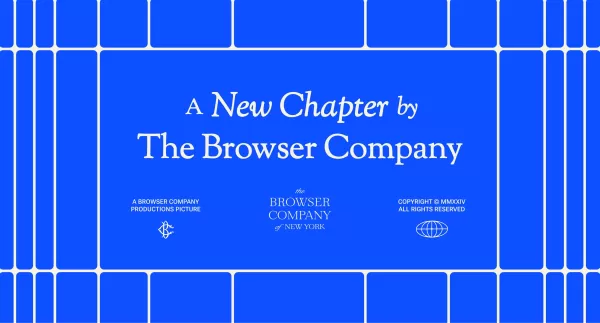 Atlassian Acquires The Browser Company for $610M to Boost Developer Tools
Atlassian, the enterprise productivity software leader, has announced plans to acquire innovative browser developer The Browser Company in a $610 million all-cash transaction. The strategic move aims to revolutionize workplace browsing by integrating
Atlassian Acquires The Browser Company for $610M to Boost Developer Tools
Atlassian, the enterprise productivity software leader, has announced plans to acquire innovative browser developer The Browser Company in a $610 million all-cash transaction. The strategic move aims to revolutionize workplace browsing by integrating
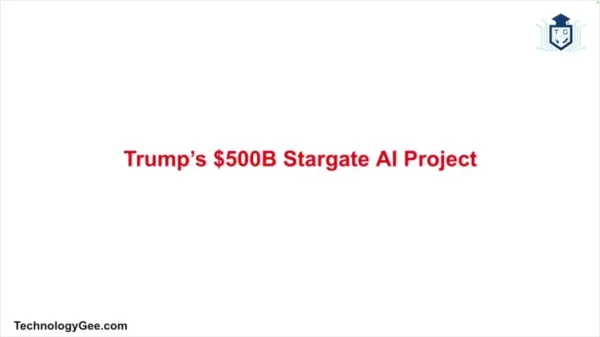 Trump's $500 Billion Stargate AI Initiative Explored In-Depth
The Stargate Initiative: America's $500 Billion AI RevolutionThe artificial intelligence landscape is undergoing seismic shifts with the United States making bold strides to secure technological dominance. At the forefront stands the monumental Starg
Trump's $500 Billion Stargate AI Initiative Explored In-Depth
The Stargate Initiative: America's $500 Billion AI RevolutionThe artificial intelligence landscape is undergoing seismic shifts with the United States making bold strides to secure technological dominance. At the forefront stands the monumental Starg
 AI Voice Actors Strike Over Ethical Concerns in Generative AI Industry
The emergence of artificial intelligence is reshaping industries worldwide, creating both opportunities and challenges within creative fields. Nowhere is this tension more apparent than in voice acting, where AI technology is sparking intense debates
AI Voice Actors Strike Over Ethical Concerns in Generative AI Industry
The emergence of artificial intelligence is reshaping industries worldwide, creating both opportunities and challenges within creative fields. Nowhere is this tension more apparent than in voice acting, where AI technology is sparking intense debates
